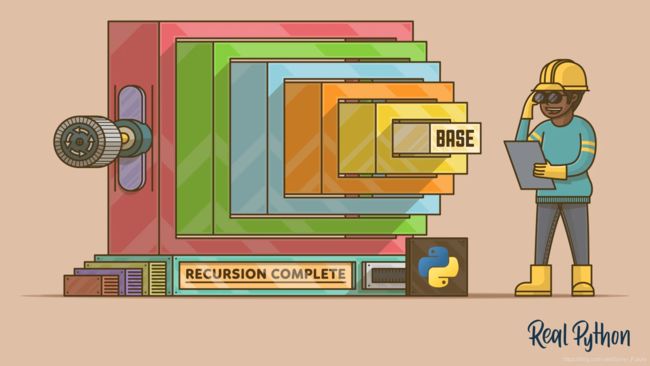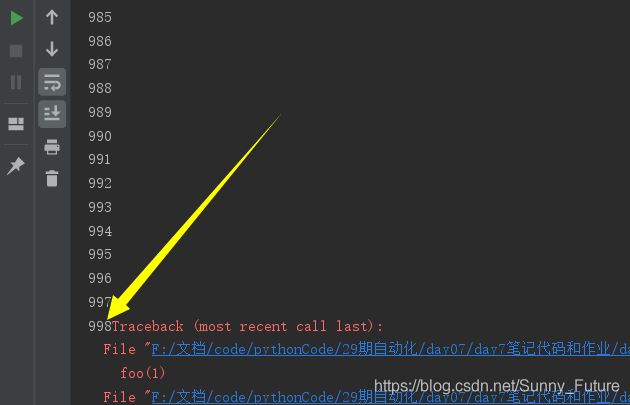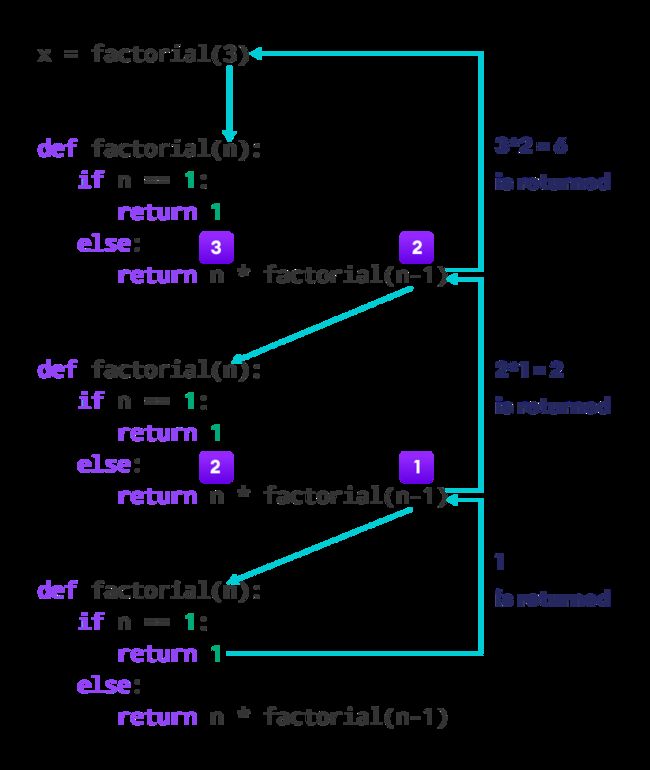python递归の拾遗
递归 Recursion
在函数内部,可以调用其他函数。如果一个函数在内部调用自身本身,这个函数就是递归函数。
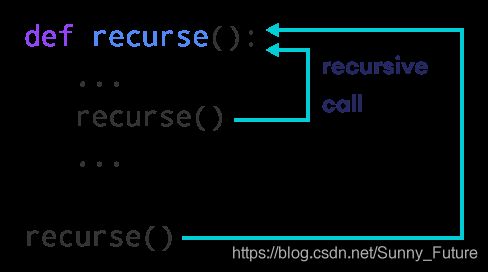
1、递归函数的执行过程
猜猜看执行结果:
def rec(n):
n = int(n/2) # 仅保留整数部分,5/2 --> 2 , 1/2 --> 0
print(n)
if n > 0:
rec(n)
print(n)
rec(10)
输出:
5
2
1
0
0
1
2
5
执行逻辑顺序如下图:
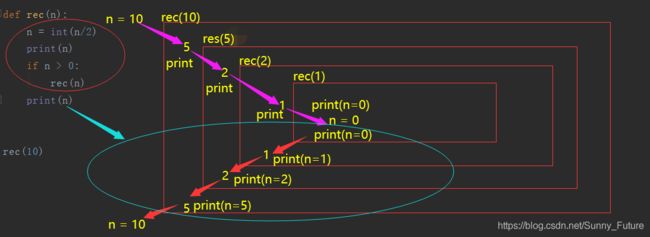
函数在每进入下一层的时候,当前层的函数并未结束,它必须等它调用的下一层函数执行结束返回后才能继续往下走。 所以最下面的那句print(n)会等最里层的函数执行时才会执行,然后不断往外退层,所以会出现0、1、2、5的效果。
2、递归的最大深度
2.1 查看最大深度
python为了我们程序的内存优化所设定的一个默认值 3000,最终的值根据计算机性能而定
In [41]: import sys
In [42]: sys.getrecursionlimit()
Out[42]: 3000
某台计算机实际能达到的递归深度
def foo(n):
print(n)
n += 1
foo(n)
foo(1)
2.2 修改最大深度
这里将python允许的递归深度设置为了10w,至于实际可以达到的深度就取决于计算机的性能了,不过我们还是不推荐修改这个默认的递归深度,毕竟你的代码质量也很关键。。
# 修改默认最大深度
import sys
print(sys.setrecursionlimit(100000))
# 再次定义执行递归
def foo(n):
print(n)
n += 1
foo(n)
foo(1)
修改之后,最大深度也是根据计算机性能而定,我这里最大到3221层
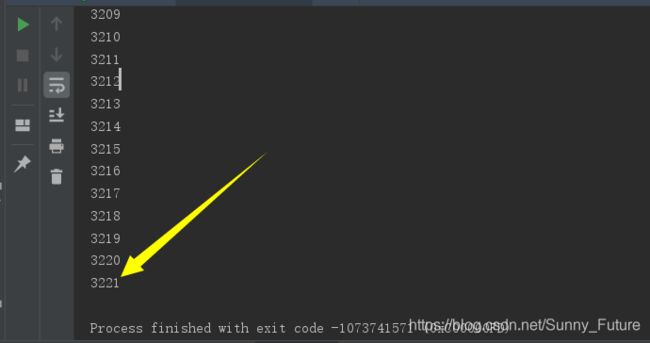
3、递归实现阶乘
阶乘的数学阶乘公式
n! = n x (n−1)!
n! = n x (n−1) x (n−2)!
n! = n x (n−1) x (n−2) x (n−3)!
⋅
⋅
n! = n x (n−1) x (n−2) x (n−3) ⋅⋅⋅⋅ x 3!
n! = n x (n−1) x (n−2) x (n−3) ⋅⋅⋅⋅ x 3 x 2!
n! = n x (n−1) x (n−2) x (n−3) ⋅⋅⋅⋅ x 3 x 2 x 1!
3.1 举例 3 的阶乘过程
递归函数实现如下
def factorial(x):
"""
这是一个递归函数
用于实现一个正整数的阶乘
"""
if x == 1:
return 1
else:
return x * factorial(x-1)
num = 3
print(num, "的阶乘是", factorial(num))
执行过程
factorial(3) # 1st call with 3
3 * factorial(2) # 2nd call with 2
3 * 2 * factorial(1) # 3rd call with 1
3 * 2 * 1 # return from 3rd call as number=1
3 * 2 # return from 2nd call
6 # return from 1st call
3.2 再举例 5 的阶乘过程
递归函数实现如下
def factorial_recursive(n):
# Base case: 1! = 1
if n == 1:
return 1
# Recursive case: n! = n * (n-1)!
else:
return n * factorial_recursive(n-1)
输出:
>>> factorial_recursive(5)
120
3.3 递归特性
递归特性:
-
必须有一个明确的结束条件
-
每次进入更深一层递归时,问题规模相比上次递归都应有所减少
递归效率不高,递归层次过多会导致栈溢出(在计算机中,函数调用是通过栈(stack)这种数据结构实现的,每当进入一个函数调用,栈就会加一层栈帧,每当函数返回,栈就会减一层栈帧。由于栈的大小不是无限的,所以,递归调用的次数过多,会导致栈溢出)
3.4 二分法查找指定值
注意:二分查找法 要查找的序列必须是一个有序的序列
如题:l = [2,3,5,10,15,16,18,22,26,30,32,35,41,42,43,55,56,66,67,69,72,76,82,83,88],找 66 的索引值
li = [100,2,3,5,10,15,16,18,22,26,30,32,35,41,42,43,55,56,66,67,69,72,76,82,83,88]
li.sort()
# [2, 3, 5, 10, 15, 16, 18, 22, 26, 30, 32, 35, 41, 42, 43, 55, 56, 66, 67, 69, 72, 76, 82, 83, 88, 100]
def binary_search(arr, x, start_index=0, end_index=0):
end_index = end_index if end_index else len(arr) - 1
if end_index > start_index:
mid_index = start_index + ((end_index - start_index) // 2) # 除 2 // 取整,且中间的索引值注意变化
if x in arr and x > arr[mid_index]:
return binary_search(arr, x, mid_index, end_index)
elif x in arr and x < arr[mid_index]:
return binary_search(arr, x, start_index, mid_index)
elif x in arr and x == arr[mid_index]:
return mid_index
else: # 假设已经取不到值了,在这种情况下,只能说明,要找的这个值 x 不在这个列表里
return "Cannot find %s in this data list!" % x
res = binary_search(li, 66)
print(res)
3.5 递归实现三级菜单
通过递归实现三级菜单,需求是 按 b 逐层退出,按 q 直接退出程序。
注意:函数在每进入下一层的时候,当前层的函数并未结束,它必须等它调用的下一层函数执行结束返回后才能继续往下走。----->以此实现 按b 返回上级菜单
# 菜单内容
menu_addr = {
'北京': {
'海淀': {
'五道口': {
'soho': {},
'网易': {},
'google': {}
},
'中关村': {
'爱奇艺': {},
'汽车之家': {},
'youku': {},
},
'上地': {
'百度': {},
},
},
'昌平': {
'沙河': {
'老男孩': {},
'北航': {},
},
'天通苑': {},
'回龙观': {},
},
'朝阳': {},
'东城': {},
},
'上海': {
'闵行': {
"人民广场": {
'炸鸡店': {}
}
},
'闸北': {
'火车战': {
'携程': {}
}
},
'浦东': {},
},
'山东': {},
}
# 首先明确递归: 有递 肯定也有归!其次 判断 逐次返回传值的情况,
# 这里若key是q,那么逐层返回q并释放内存空间,再输入 key 遍历执行三级菜单函数
def three_level_menu(menu):
while True:
for key in menu: print(key)
key = input('请输入选项【b(返回上级)|q(退出程序)】:').strip()
if key in menu:
res = three_level_menu(menu[key])
if res == 'q':
return 'q'
if key == 'q':
return 'q'
if key == 'b':
return
three_level_menu(menu_addr)
3、总结
- 不能无限次数的递归 3000
- 在一个函数的内部调用这个函数本身
- 停止一次递归的方法就是让递归内层函数return(包括return None)
